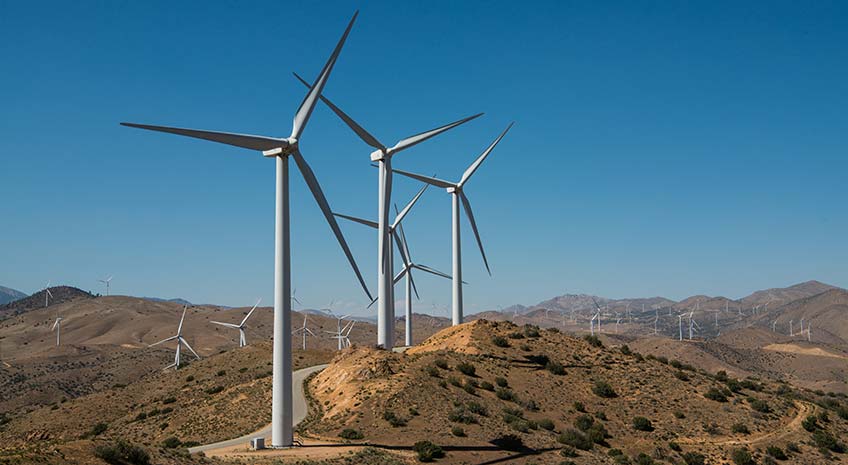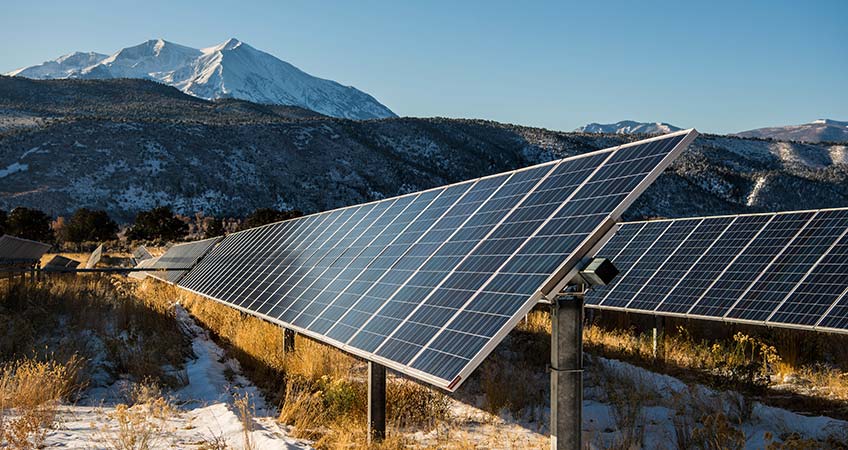Updated Standard Scenarios Outlook Models Possible Futures for U.S. Electricity Sector
A Flagship NREL Analysis Project, the Fifth Annual Standard Scenarios Outlook Models 36 Possible Projections for Power Sector Evolution through the Year 2050

Like any system of moving parts, the U.S. electricity sector maintains a delicate balance. Any shift in the variety of factors comprising it—whether technology, policy, or market changes—has the potential to steer its future direction.
To better inform energy system stakeholders about these cause-and-effect relationships, NREL has released its 2019 Standard Scenarios Report and data viewer. Updated annually since its introduction in 2015, the Standard Scenarios analysis provides a consistent and timely looking glass into possible evolutions of the electricity sector through the year 2050.
Building a Forward-Thinking Database
The 2019 report includes 36 forward-looking scenarios, six of which are unique to this year’s updated analysis. These scenarios capture a range of possible power system futures, considering “standard” factors that impact power system evolution, including technology costs, fuel prices, demand growth, and current policy projections.
“We use this broad scenario range to better understand potential changes in the power sector,” said NREL Senior Analyst Wesley Cole, lead author of the study. “For example, in this year’s report we looked at how variable generators like wind and solar can contribute toward grid reliability under high and low renewable energy conditions.”
Alongside the report, the Standard Scenarios Results Viewer is an interactive tool that allows users to conduct their own independent analysis while drawing on the modeling and expertise used to create the scenarios. Users can compare how different technologies—such as biopower, nuclear, or land-based wind—contribute to total estimated electricity generation or capacity over time. They can also pull out state-specific data to assess regional trends.
The Standard Scenarios analysis uses the latest technology cost and performance data from NREL’s Annual Technology Baseline, as well as two of NREL’s flagship energy modeling tools: the recently publicly released Regional Energy Deployment System (ReEDS) model and the Distributed Generation Market Demand (dGen) model. The ReEDS and dGen models project utility-scale power sector evolution and distributed photovoltaic (PV) adoption, respectively, using the Standard Scenarios definitions to specify model inputs. The ReEDS model takes a system-wide, least-cost approach when making decisions, while dGen uses a customer-centric adoption approach.

Standard Scenarios, Complex Outcomes
Supported by the U.S. Department of Energy (DOE)’s Office of Energy Efficiency and Renewable Energy (EERE), the Standard Scenarios analysis leverages current EERE activity to better understand the individual—and interplaying—factors affecting the electricity sector. The effort aims to create a robust framework of technology cost and performance data—as well as notable observations—that can help inform stakeholder decision-making regarding the future direction of the U.S. power sector.
This year’s Standard Scenarios report explores three key themes based on the modeled scenario results, describing the evolving U.S. power sector in the context of recent trends and projected changes:
- How different technology revenues change with the evolving generation mix: Energy generators receive revenue from four primary categories of grid services: planning reserves, operating reserves, providing energy, and state policy compliance. Revenues for these grid services vary over time and by scenario, but overall trends show increased energy and planning reserve revenues and decreased operating reserve revenues. Such changes could in turn influence real markets and regulations, but this analysis does not explore these market effects.
- How resource adequacy is maintained as variable generation increases: At high or growing penetration of variable renewable energy (VRE)—including existing thermal or hydropower plants, as well as emerging storage technologies—non-variable technologies continue to largely supply system resource adequacy requirements, despite VRE contributions.
- How these changes occur regionally across the United States: Changes in regional generation mixes are driven by technology costs, state policies, and resource quality. While states may align with broader national trends—such as moving from coal toward either natural gas, wind, or solar technologies—there is still meaningful regional variation within the national grid.
“By providing insights like these, we aim to improve the robustness and comparability of the vast array of electric sector analysis happening across the industry,” Cole said. “Our data helps accelerate these analyses while establishing baselines for related work.”
The study ultimately helps illustrate how economic and environmental factors affect the electric sector. With useful observations for academics, lab researchers, and policymakers alike, the Standard Scenarios results may prompt major stakeholders to consider and address new energy analysis questions.
The above observations are detailed in the 2019 Standard Scenarios Report, now available for download. To explore the model results, access the interactive Standard Scenarios Results Viewer tool.
Learn More at Standard Scenarios Info Session
On January 9, 2020, at 11 a.m. Mountain Time, NREL will host a webinar to discuss the 2019 Standard Scenarios results and findings. Join authors Wesley Cole and Trieu Mai to hear about project insights, challenges, and applications, as well as to participate in a Q&A session.
Learn more about NREL's energy analysis research.
Last Updated May 28, 2025
